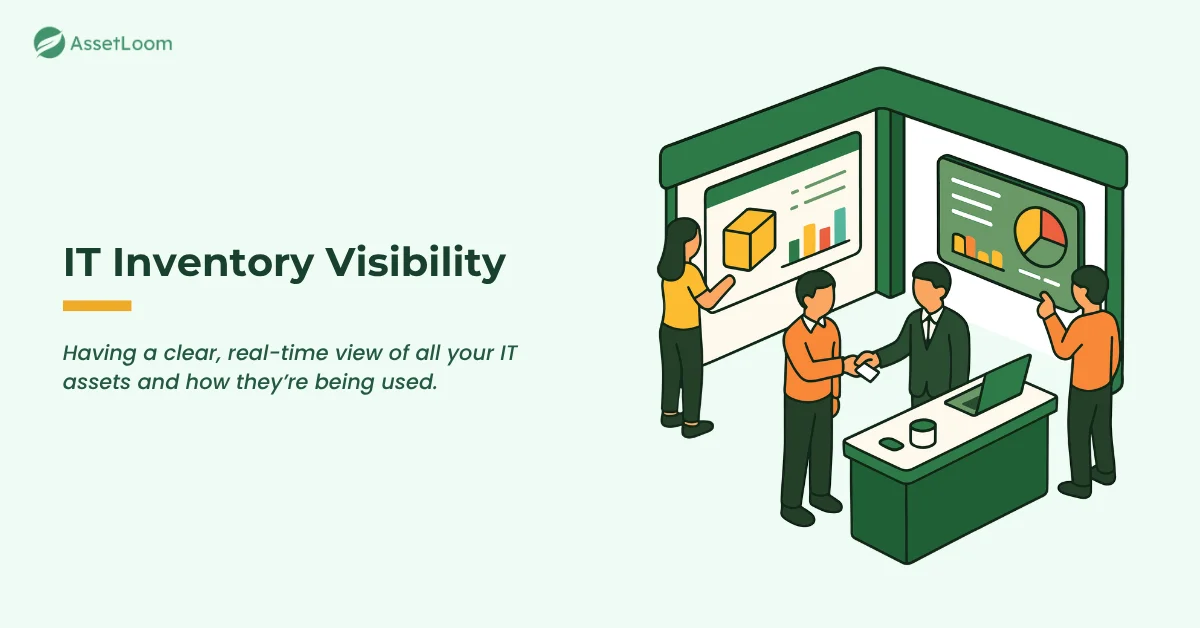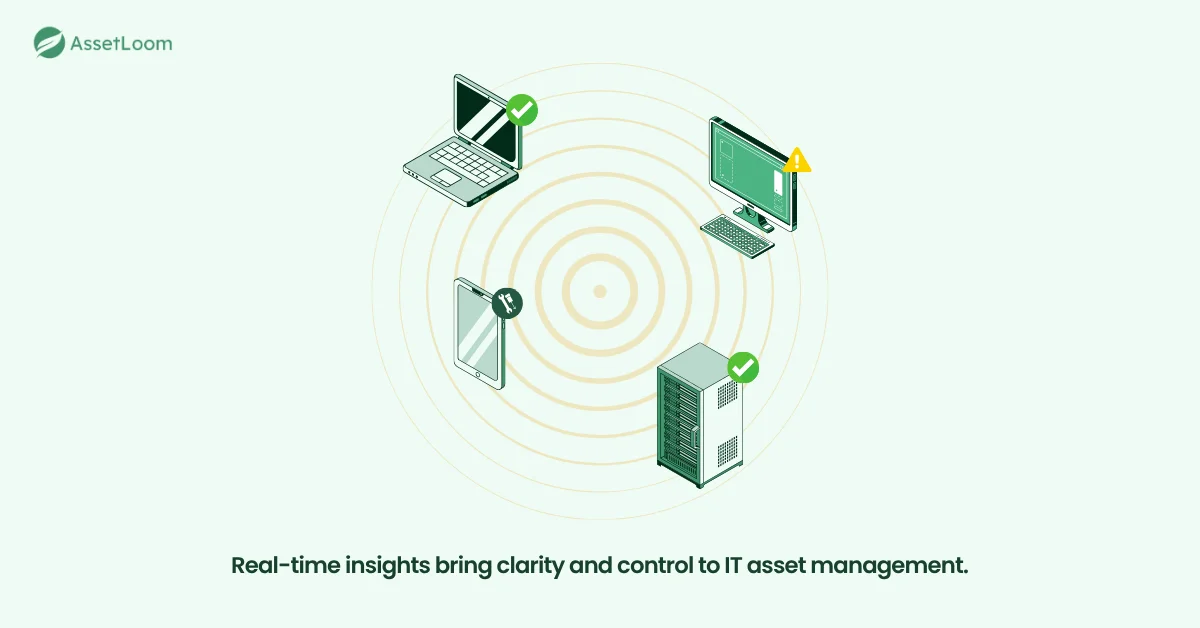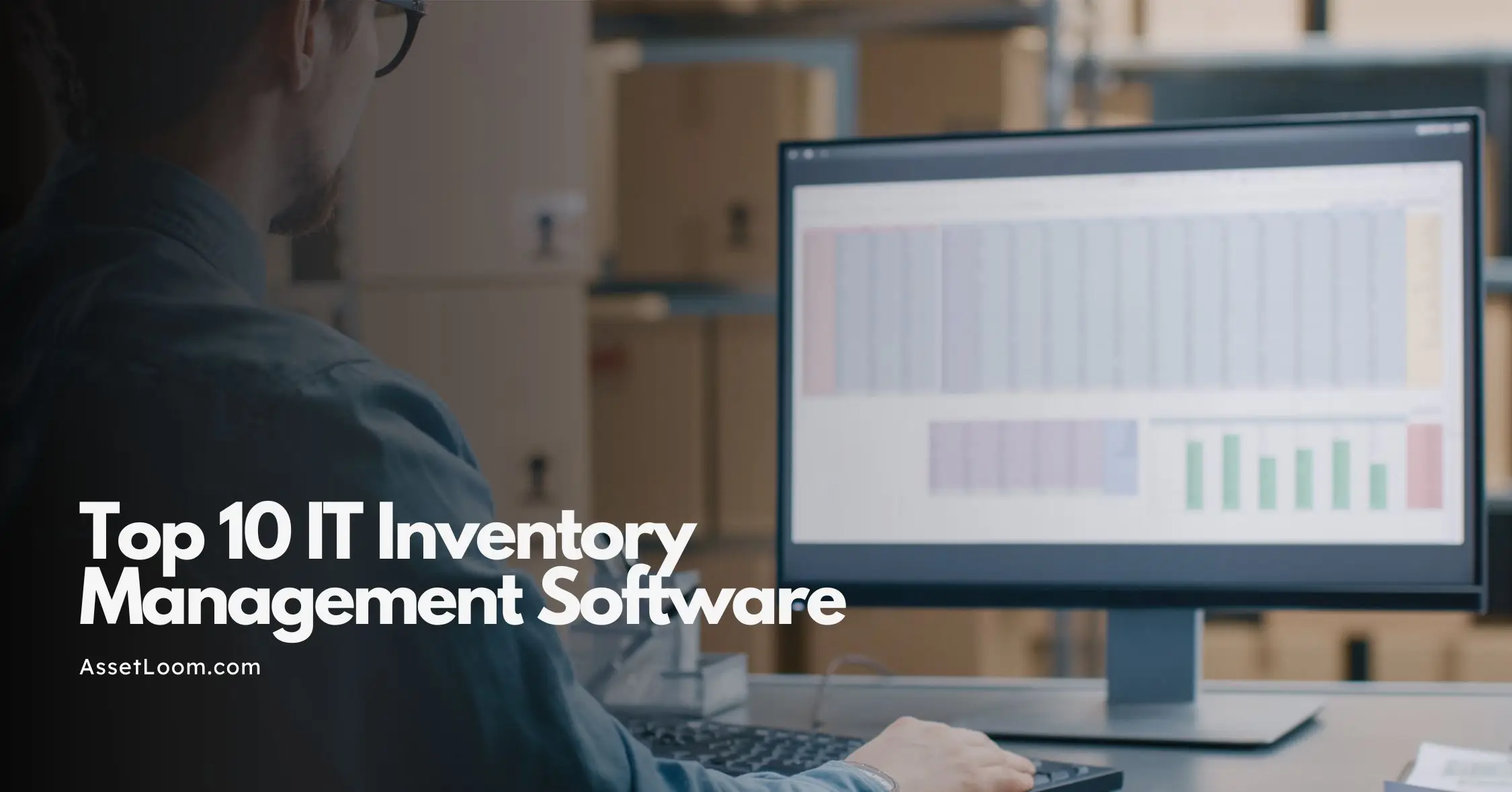Take Control of Your Assets with IT Inventory Visibility
Discover how IT inventory visibility can help you track, manage, and optimize your assets, reduce costs, and improve operational efficiency in your business.
Think of running a business without knowing where your IT assets are or how well they’re performing. It’s like driving a car without a dashboard. You might be moving forward, but you’re missing vital information that could help you avoid problems.
IT inventory visibility changes that. It gives you a clear, real-time view of where your assets are, how they're being used, and whether they’re in good condition. With this insight, you can eliminate inefficiencies, reduce costs, and quickly resolve issues before they slow you down. In today’s fast-paced business world, having full visibility into your IT assets is the key to keeping things running smoothly and efficiently.
What is IT Inventory Visibility?
IT inventory visibility refers to the ability to track and monitor all IT assets in real time. Whether it's hardware like laptops, servers, and printers, or software licenses and network devices, IT inventory visibility provides a clear picture of where assets are, what condition they’re in, and how they’re being used.
This visibility ensures businesses never lose track of valuable resources, helps avoid unnecessary purchases, and prevents disruptions caused by missing or underutilized assets. Essentially, IT inventory visibility is a vital part of IT inventory management, enabling smarter, more efficient operations.

Core Technologies That Make IT Inventory Visibility Possible
Several technologies play a key role in enabling IT inventory visibility, making it efficient and accurate:
- RFID (Radio Frequency Identification): Uses tags and readers to automatically track assets and provide real-time location data, even without direct line-of-sight.
- IoT (Internet of Things): IoT sensors continuously monitor assets, providing updates on their location, condition, and usage in real time.
- Asset Management Software: Centralizes data from RFID and IoT, allowing businesses to track, manage, and report on assets efficiently, all within one platform.
These technologies work together to create an intelligent system that helps businesses monitor their IT inventory automatically, with real-time updates and minimal manual effort. This level of visibility reduces errors, saves time, and ensures your assets are always where you need them, when you need them.
Maximizing Efficiency with IT Inventory Visibility
Why IT Inventory Visibility Matters
Tracking your IT assets has never been more crucial to keeping your business running smoothly. When you know where everything is, how it’s being used, and whether it’s working properly, you can make smarter decisions that save you time and money. Without this kind of visibility, you risk running into issues like downtime, wasted resources, or even losing track of valuable assets. And let’s be honest, that can quickly turn into a headache.
How Real-Time Visibility Helps You Allocate Assets Better
When you can see what assets are being used and how often, you can make sure they’re going to the right places. For example, if one team is using equipment a lot while another team has equipment just sitting there, you can move things around to make better use of what you already have. This way, you’re not wasting anything, and you get more value out of your assets.
Reducing Downtime and Delays
No one likes it when things break down, especially when they cause delays. With IT inventory visibility, you can spot when assets need maintenance or are about to fail before they turn into a bigger problem. Knowing this in advance means you can fix things quickly, keeping your team productive and minimizing unexpected downtime.
Making Operations Run Smoother and Saving Time
Tracking IT assets manually is not only time-consuming but also easy to mess up. With real-time visibility, you’re automatically keeping tabs on everything, which means less time spent hunting down equipment or wondering where something is. It makes your operations smoother and frees up your team to focus on what really matters.
How IT Inventory Visibility Helps Boost Business Performance
Having a clear view of your IT assets isn’t just about keeping track; it’s about making your business run more efficiently and helping it grow. When you know where your assets are, how they’re being used, and when they need attention, you can make smarter decisions that improve performance and save time and money.
Making Smarter Decisions with Real-Time Data
With IT inventory visibility, decision-making becomes easier and more reliable. Real-time access to data means you’re always working with the latest information. For example, if you see that certain equipment isn’t being used as much as it should be, you can move it to another department that needs it, rather than buying new assets. And if you know when equipment is reaching the end of its life, you can plan for repairs or replacements before they cause downtime.
This kind of visibility helps you act proactively, preventing issues before they arise, reducing waste, and keeping everything running smoothly.
Improved Forecasting and Planning
Real-time visibility also helps you plan for the future. By tracking how your assets are used, you can identify patterns and trends, which allows you to forecast more accurately. For example, if certain assets are in higher demand during specific seasons, you can prepare in advance, avoiding bottlenecks or shortages.
Knowing the lifespan of your assets helps you budget better, too. You can plan for upcoming replacements or upgrades, making sure you stay on track and avoid surprises.
Better Resource Management
IT inventory visibility makes it easier to manage resources efficiently. You’ll know exactly what assets you have, where they’re being used, and if any are sitting unused. For example, if one department has extra equipment while another is running low, you can move assets around to balance things out, ensuring everything gets used to its full potential.
Having full visibility also prevents over-purchasing or running out of critical resources. By tracking your inventory in real-time, you’ll only buy what you truly need, keeping costs in check while avoiding shortages that could disrupt your operations.
The Value of Real-Time Insights in IT Asset Management
Real-time insights revolutionize IT asset management by giving businesses a clear, up-to-the-minute view of their resources. Instead of reacting to issues as they arise, having this level of visibility allows you to act proactively, catching potential problems before they disrupt operations.
For example, if equipment is underperforming or nearing the end of its lifecycle, you can address it immediately, whether that means scheduling maintenance or replacing assets before they fail. With real-time updates, you are never left guessing about the status of your assets, giving you the confidence to make informed decisions without waiting for reports or feedback.
This kind of visibility is not just about fixing issues quickly; it is about optimizing your assets for maximum efficiency. By understanding how your assets are being used in real time, you can ensure that they are being allocated where they are needed most, preventing underuse or overuse and reducing unnecessary purchases. It is a smarter way to manage your resources and ensure everything is working at peak performance.
When problems do arise, having access to immediate data makes resolving them faster and easier. Whether it is locating a misplaced asset or fixing a malfunctioning device, real-time insights allow you to take action quickly, minimizing downtime and keeping operations running smoothly.

Emerging Trends in IT Inventory Visibility
The way businesses manage their IT assets is changing fast. New technologies are making it easier to track, monitor, and understand assets in real time. These trends are not just improving efficiency; they are reshaping how companies think about visibility, control, and long-term planning.
IoT Integration for Smarter Tracking
The Internet of Things (IoT) is having a major impact on how businesses manage assets. By connecting devices and sensors, companies can track their IT equipment in real time and collect data about its location, condition, and usage. This makes asset tracking far more accurate and responsive. For example, IoT sensors can alert you when a server needs maintenance or when a piece of equipment is being overused, helping you act before small issues turn into big problems.
AI and Machine Learning for Predictive Management
Artificial intelligence and machine learning are bringing a predictive edge to asset management. Instead of waiting for something to go wrong, AI systems can analyze usage data to predict when an asset might need service or replacement. This helps reduce downtime, plan maintenance more efficiently, and extend the life of valuable assets. Over time, these insights help businesses save money and operate more smoothly.
Blockchain for Greater Transparency
Blockchain technology is also starting to play a role in asset management. It creates a secure, tamper-proof record of every asset transaction, from acquisition to disposal. This level of transparency builds trust and ensures data accuracy, especially in large organizations where many people handle the same assets. It also helps prevent errors and fraud, improving accountability across the entire asset lifecycle.
Cloud-Based Systems for Flexibility
Cloud asset management tools are now the standard for many organizations. They make it possible to access inventory data from anywhere, at any time, which is especially valuable for remote or distributed teams. Cloud systems also scale easily as your business grows, allowing you to manage more assets without adding complexity. Plus, with automatic updates and data backups, cloud solutions make managing IT inventory simpler and more secure.
Conclusion
IT inventory visibility is no longer just a tool for tracking assets. It is a foundation for smarter and more efficient business operations. When you can see exactly where your assets are, how they are performing, and what they need, you gain the power to make faster and more informed decisions.
As technologies such as IoT, AI, and cloud systems continue to evolve, visibility will only become sharper and more accessible. Businesses that embrace it now will be better prepared to reduce costs, prevent downtime, and adapt quickly to change.
In the end, taking control of your IT assets is not just about organization. It is about building a stronger and more agile business for the future.

Related Blogs
Subscribe for Expert Tips and Updates
Receive the latest news from AssetLoom, right in your inbox.

